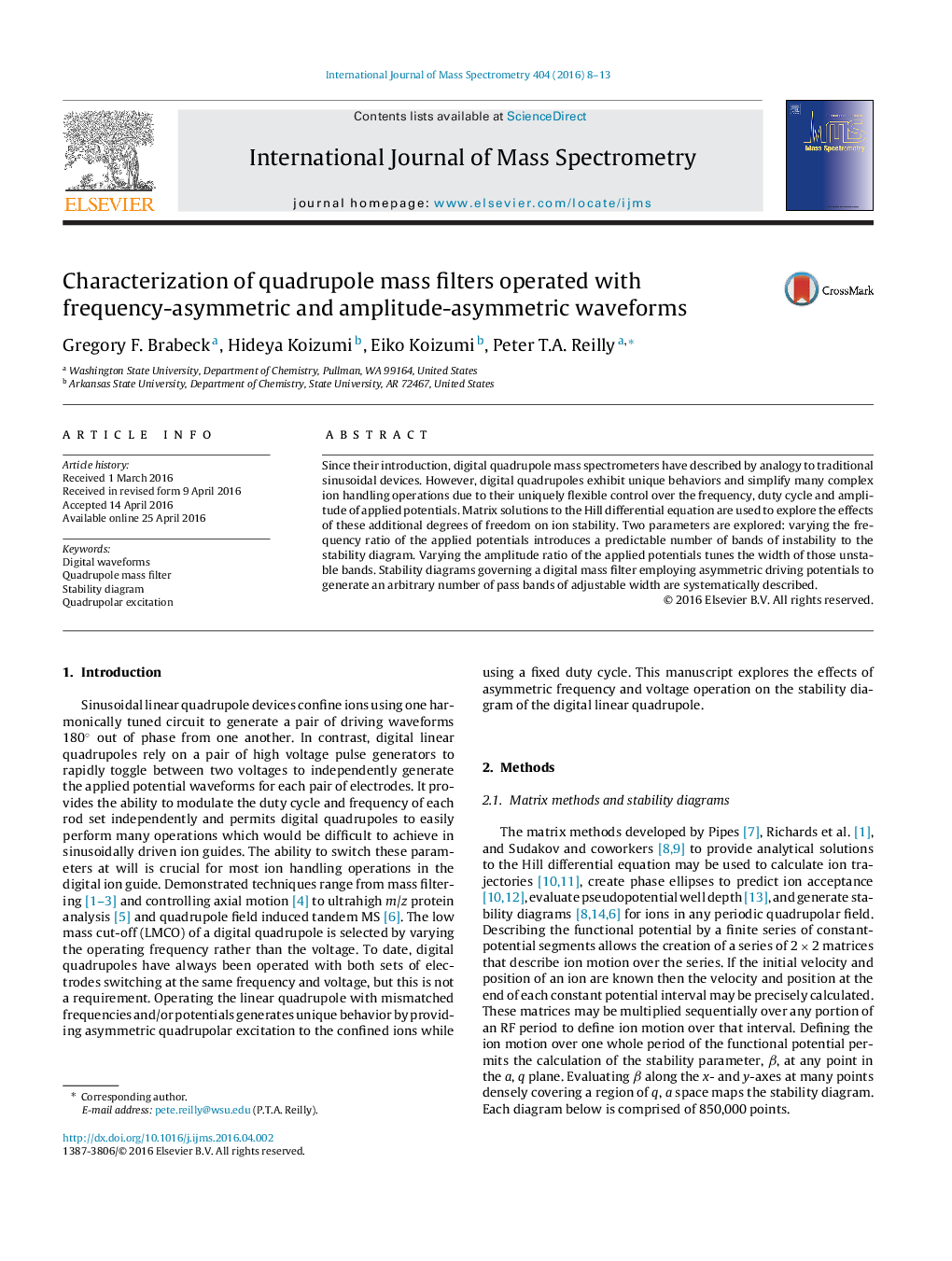| کد مقاله | کد نشریه | سال انتشار | مقاله انگلیسی | نسخه تمام متن |
|---|---|---|---|---|
| 1192608 | 1492228 | 2016 | 6 صفحه PDF | دانلود رایگان |
• Matrix methods are used to generate stability diagrams which account for supplemental quadrupolar excitation.
• The effects of mismatched frequencies and voltages are explored.
• Resonance-induced unstable regions of adjustable width are described.
Since their introduction, digital quadrupole mass spectrometers have described by analogy to traditional sinusoidal devices. However, digital quadrupoles exhibit unique behaviors and simplify many complex ion handling operations due to their uniquely flexible control over the frequency, duty cycle and amplitude of applied potentials. Matrix solutions to the Hill differential equation are used to explore the effects of these additional degrees of freedom on ion stability. Two parameters are explored: varying the frequency ratio of the applied potentials introduces a predictable number of bands of instability to the stability diagram. Varying the amplitude ratio of the applied potentials tunes the width of those unstable bands. Stability diagrams governing a digital mass filter employing asymmetric driving potentials to generate an arbitrary number of pass bands of adjustable width are systematically described.
Figure optionsDownload high-quality image (98 K)Download as PowerPoint slide
Journal: International Journal of Mass Spectrometry - Volume 404, 20 June 2016, Pages 8–13
